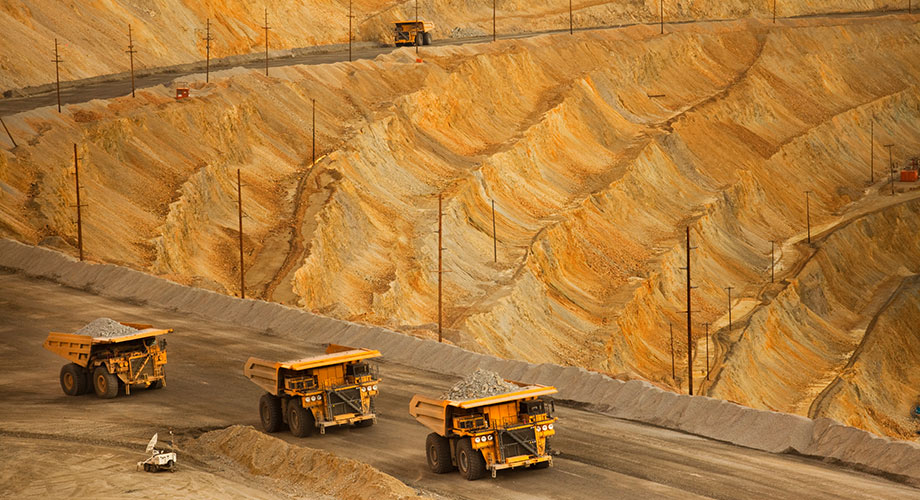MINING
a complex of industries involved in the extraction and enrichment of minerals. Until the mid 70s. developing countries were the main suppliers of mineral raw materials for Western countries. After the emergence of the energy and fuel crisis, Western countries began to focus on saving raw materials and their own mineral resources. Canada, Australia and South Africa have become major mining powers. However, the role of India, Malaysia, Indonesia, Saudi Arabia, Zaire, Zambia, Morocco, Brazil, Chile, Venezuela remains very large. Among the producers and exporters of mineral raw materials are Russia, Ukraine, Kazakhstan.

Mining industry
a complex of industries involved in the extraction and enrichment of minerals. The industry includes: fuel, mining, chemical, mining, extraction of mineral technical raw materials, and other types of non-metallic raw materials (diamonds, graphite, asbestos, mica, clay, building materials, etc.). Developments are carried out both open (quarries) and underground (mines). No country in the world has a complete set of all types of mineral raw materials. Only 20-25 countries have volumes exceeding 5% of the world’s reserves of any one type of mineral. Among the main mining powers are the USA, Russia, China, Canada, Australia, South Africa, Brazil. In the system of the world economy, economically developed countries act in the main. consumers of raw materials, and developing ones extract and export mining products. However, some highly developed countries (for example, the USA, Canada, Australia) have large reserves and production, often being even world leaders in the extraction of various types of raw materials. Nevertheless, in developed countries, the share of extractive industries in total industrial production in cf. is 2%, and in developing countries – 14% (in the oil-producing countries of the Middle and Middle East – approx. 40-50%).
In an environment where difficult economic conditions prevail, companies are increasingly faced with the challenge of providing stakeholders with corporate commitments that are implemented in all areas of activity.
In the mining industry, effective management of the operation of physical assets is an important element in securing shareholder value. The portfolio of mining assets is becoming more and more diverse with assets such as the mining fleet, factories and infrastructure (including railways, roads, ports). Asset managers must ensure that the organization’s assets are effectively managed with a focus on optimal performance while minimizing costs and reducing risks.
Industry tasks
In recent years, the mining industry has undergone a significant transformation, with many organizations consolidated to ensure global competitiveness.
High demand and high commodity prices are spurring investment as businesses try to introduce new activities and optimize production at existing plants as regulations become ever more stringent.
Mining operations continue to face a number of challenges that affect their competitiveness and value to stakeholders, including:
- obligations to ensure labor safety
- focus on cost reduction
- lack of skills and retention of knowledge
- striving for continuous improvement
- legal and environmental compliance
- effective management of physical assets
General characteristics of the mining industry
The mining industry is a complex of industries for the extraction and processing of minerals. The mining industry continues to have a great impact on the economy and the system of the international geographical division of labor.
2. Geography of the mining industry
The economically developed countries account for the main shares of the production of chromium ores, lead, zinc, gold, molybdenum, phosphorites, salts. Developing countries account for the main shares of the production of silver, oil, copper, bauxite, and tin.
Until the mid 70s. developing countries were the main suppliers of mineral raw materials for Western countries. After the emergence of the energy and fuel crisis, Western countries began to focus on saving raw materials and their own mineral resources. Canada, Australia and South Africa have become major mining powers. However, the role of India, Malaysia, Indonesia, Saudi Arabia, Zaire, Zambia, Morocco, Brazil, Chile, Venezuela remains very large. Among the producers and exporters of mineral raw materials are Russia, Ukraine, Kazakhstan. Only 20 – 25 countries have volumes exceeding 5% of the world’s reserves of any one type of mineral.

Great mining countries
Rice. 1. Great mining countries
Types of minerals:
1. Ore.
2. Non-metallic (mining and chemical raw materials).
3. Fuel (oil, gas, coal, oil shale).
Examples of leading countries in terms of reserves and production of certain minerals:
Copper: Chile, Zambia, Peru.
Tin: Peru, Indonesia, Malaysia.
Bauxites: Guinea, Jamaica.
Phosphorites: Morocco, USA, China.
Oil: Saudi Arabia, Venezuela, Iran.
Potassium salts: USA, Russia, Canada.
Natural gas: Russia, Iran, Qatar.
Ferrous metallurgy
Metallurgical industry.
Separate ferrous metallurgy and non-ferrous metallurgy.
Ferrous metals include iron, chromium and manganese. In the era of scientific and technological revolution, ferrous metallurgy entered an era of structural crisis.
Causes of the structural crisis:
1. The trend towards a decrease in the metal consumption of industrial products.
2. Competition from modern structural materials.
3. Strengthening measures for environmental protection.
Recently, there has been a shift in ferrous metallurgy from developed countries to developing ones.
The main ferrous metal is iron, from which steel is smelted – an alloy (solid solution) of iron with carbon (and other elements), characterized by a eutectoid transformation. The carbon content in steel is not more than 2.14%. Carbon gives iron alloys strength and hardness, while reducing ductility and toughness.
Leading steel exporters: China, Japan, Ukraine, Germany, Russia.
Ferrous metallurgy plants in their location are oriented to the territorial combination of coal and iron ore basins (China, Russia, South Africa, Ukraine). In the era of the scientific and technological revolution, an orientation towards the flows of coking coal and iron ores became important (Japan, some countries of Western Europe).
The largest metallurgical plants include plants located in the following cities: Wuhan, Magnitogorsk, Pittsburgh, Pohang.
